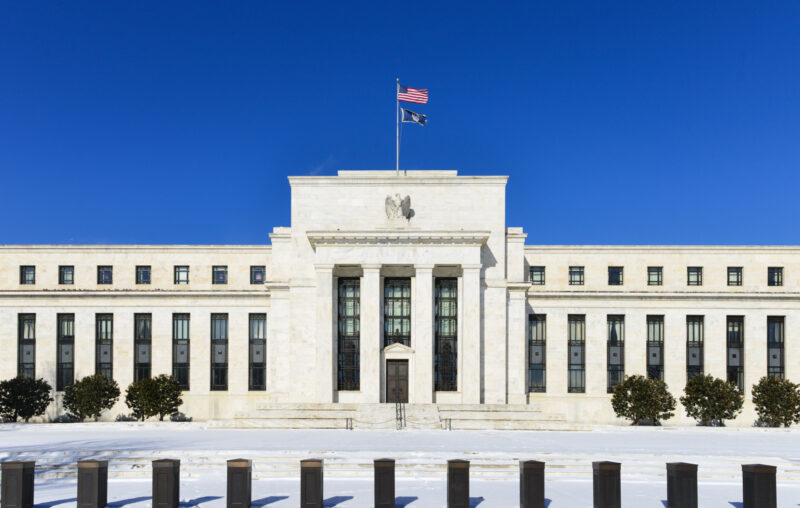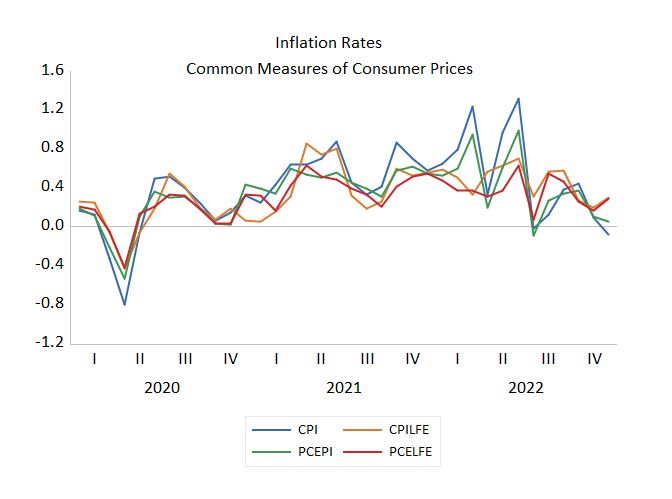The FOMC: To Pause or Not to Pause?

The Federal Open Market Committee (FOMC) decided to raise the federal funds interest rate this week by 25 basis points. Taken by itself, an increase in short-term interest rates by 25 basis points is relatively unimportant. A change in interest rates that small is unlikely to have substantial effects on consumers’ or firms’ borrowing or lending.
The increase, though, is part of a series of increases, and that does matter. For much of 2022, the FOMC was playing catch up after misinterpreting the increase in inflation as “temporary” and small. This interpretation was in spite of the dramatic increase in M2, which grew 16 percent from February to June 2020. Absent other factors affecting the inflation rate, this suggests an increase in the level of prices in the United States by about 15 percent. Of course, this increase would occur over time. If households’ expectations of inflation in future years were unaffected, that would be the end of the story. While not as “temporary” or as minor as the FOMC initially interpreted the increase in inflation to be, higher inflation need not be persistent.
In response to the inflation, the Federal Reserve increased the federal funds rate from a range of 0.00 to 0.25 percent to 4.00 to 4.25 percent in 2022. These increases occurred due to increases by 0.25 to 0.75 percentage points at seven of the eight FOMC meetings in 2022. There were extraordinary increases of 0.75 percentage points in June, July, and September.
The series of increases can be interpreted as part of a plan to raise interest rates and lower inflation rates to decrease the extraordinary inflation owing to the one-off cash distributions in 2020.
These increases in the federal funds rate have been associated with a decrease in the inflation rate. The attached figure shows the inflation rates from January 2020 to December 2022 measured by the Consumer Price Index (CPI) and the Personal Consumption Expenditures Price Index (PCEPI). It also includes core CPI (CPILFE) and core PCEPI (PCELFE), which exclude food and energy prices. CPI is the most commonly used measure. The PCEPI is the Fed’s preferred measure of inflation, and Fed officials generally believe that core PCEPI is the best indicator of underlying inflation.

While there are differences, there is common overall behavior. After deflation in 2020, inflation returned and increased dramatically, peaking at 1.0 percent per month in March and June of 2022 for the PCEPI. These inflation rates are 12 percent per year, if they were to continue for a year. Core PCEPI inflation peaked at 0.6 percent per month in June, which would be an annual rate of 7.2 percent. Since then, inflation has been noticeably lower and is falling overall. While not too much should be made of any one month’s data alone, inflation fell in the second half of 2022. The inflation rate for the five months from June through December 2022 is 1.6 percent, which would be an annual inflation rate of about 3.2 percent. While not as low as the target average inflation rate of 2 percent, the direction of movement is correct.
Furthermore, the breakeven inflation rate on 5- and 10-year dollar-denominated and inflation-adjusted government securities is 2.3 percent. This is roughly consistent with the Fed’s target. These rates are down from 3.5 and 3.0 percent earlier in 2022. This suggests that expectations are more or less consistent with the Federal Reserve’s stated goals.
Given the lagged effect of monetary policy on the economy, it is quite possible that the inflation rate will gradually return to the Federal Reserve’s goal, and to what market participants expect, without any further changes in the Federal Funds rate.
Why not increase rates more, possibly buying insurance against inflation increasing?
While inflation is moderating, signs of impending recession are common. The long-term interest rate is above the short-term rate, which has been a reliable signal of recession at least since World War II. Reports of large layoffs at large companies have been common in the Wall Street Journal. The WSJ even had an article about whether it is appropriate to lay off people by email. M2 is not given much credence as a signal by many, just as it wasn’t for the recent inflation. That said, the recent monthly declines in M2 do not suggest higher, or even continuing, inflation.
While the Phillips Curve is commonly invoked as a reason to induce a recession and thereby lower inflation, the fall in inflation in 2022 is evidence that a recession is unnecessary. That is in addition to the large body of theoretical arguments and empirical evidence that the Phillips Curve is not informative.
While inflation is not down to 2 percent, the direction is correct. Given uncertainties surrounding the unusual stimulus and the lagged effects of monetary policy, it would be prudent to hold the Federal Funds rate constant for a few months and see how the economy responds to recent policy.










